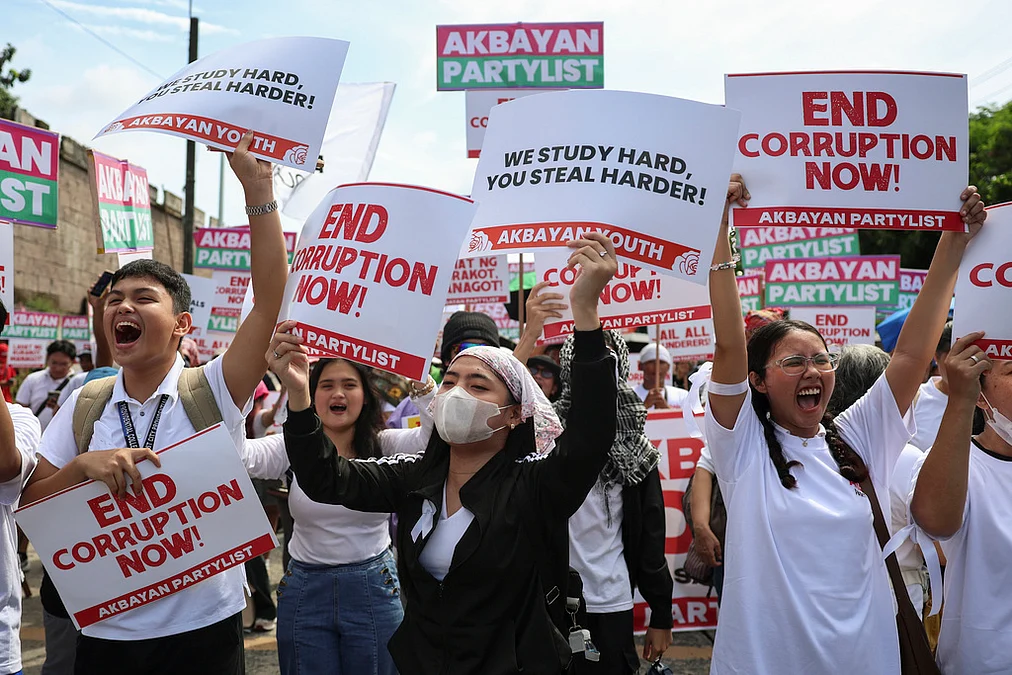Philippines: How AI could catch budget anomalies, why midnight budget insertions belong to Dodos
By Jay Hilotin
Copyright gulfnews

Manila: Public anger against budget insertions are hitting boiling point.Midnight budget insertions are last-minute, unscrutinised additions or reallocations of funds in the national budget, called the General Appropriations Act (GAA), even as the country runs budget deficits.Critics say the practice involves key lawmakers “manipulating” blank fields in the bicameral report to insert funds post-ratification. This violates the Revised Penal Code (falsification of legislative documents) and the Anti-Graft and Corrupt Practices Act.These last-minute additions or alterations to budget allocations — often for infrastructure, public works, and cash aid programs — allegedly bypass standard legislative procedures, such as bicameral ratification..ControversyThe controversy escalated amid probes into anomalous flood control projects, where inserted funds were funnelled to ghost or overpriced contracts, echoing the 2013 pork barrel scandal.It’s seen as an underhanded route, as insertions are often slipped in during closed-door Bicameral Conference Committee (“Bicam”) sessions, composed of a few peopel.Why closed door? And where are the minutes of those meetings? In a democracy, and in the era of AI, do such hidden schemes hold real long-term value?Ordinary Filipinos are now asking these questions. Now, “OpenBicam” campaigners say this midnight insertion practice belongs to an outdated era. .Here’s why:#1. Public demand for transparencyThe old practice thrived in an era of limited public oversight. But modern Filipinos, armed with big data, empowered by social media and advocacy campaigns like OpenBicam, demand accountability.Scandals, such as the ₱142.7 billion in questionable 2025 DPWH flood control insertions, and the so-called “Nepo-babies” exposed via socmed platforms, have fuelled public fury. Going forward, in the era of AI where these midnight insertions are remarkably easy to detect, this could make underhanded moves politically risky and socially unacceptable..#2. Legal and institutional reformsThe 2013 Supreme Court ruling against pork barrel funds (Priority Development Assistance Fund, PDAF) declared such discretionary allocations unconstitutional, pushing insertions into a gray area. Continued reliance on bicam loopholes, like the “budol scheme” cutting programmed funds for new projects, conflicts with post-2013 expectations of rule-based budgeting, as noted by former Sen. Panfilo Lacson.Technological and Data-Driven Accountability: The digital age enables real-time budget tracking and analysis by civil society, media, and watchdogs like Social Watch Philippines. Closed-door insertions, once hidden, are now quickly spotted through open data platforms or leaks, as seen in the 2025 budget’s P289 billion DPWH allocation hike, rendering such practices relics of a less transparent past..#3. Legislative pledges for reformBipartisan support for opening bicam sessions (e.g., livestreaming for 2026) signals a shift. The old era’s secrecy is being challenged by commitments to public access, driven by pressure from over 100 organisations in the OpenBicam campaign..#4. Can AI help detect such insertions?Yes, AI can significantly aid in detecting midnight budget insertions, enhancing transparency and accountability. Here’s how:Automated Budget Analysis:How: AI-powered natural language processing (NLP) and data analytics can compare versions of the General Appropriations Bill (GAB) pre- and post-bicam to flag discrepancies. For example, AI could detect the P355 million Bulacan flood control insertion in 2025 by analyzing budget line items across House, Senate, and final versions.Tools: Machine learning models trained on historical budget data can identify anomalies, such as sudden increases (e.g., P289 billion DPWH hike) or unlisted projects not debated in open sessions.Example: An AI system could scan the 2025 GAB’s 6,352 pages, cross-referencing against committee reports to highlight unapproved insertions in hours, a task taking humans weeks.Real-Time Monitoring:How: AI can process live data from budget deliberations (if livestreamed) or public disclosures, using NLP to extract and categorize proposed amendments. It can alert watchdogs to terms like “flood control” or “infrastructure” tied to suspicious reallocations.Tools: Sentiment analysis and keyword tracking can flag terms associated with past insertions (e.g., “special projects” or “district allocations”), as seen in X posts exposing 2025’s “hyperlocal” schemes.Example: Real-time AI monitoring during December 2024 bicam sessions at Manila Hotel could have flagged the “small committee” adding P142.7 billion in flood control funds.Predictive modelling and anomaly detection:How: AI can use historical data on insertions (e.g., 2021-2025 budgets) to predict likely insertion points, such as agencies like DPWH prone to padding. It can score budget items for risk based on patterns (e.g., late-night amendments, vague descriptions).Tools: Anomaly detection algorithms can highlight outliers, like a district receiving disproportionate funds (e.g., Bulacan’s 2025 allocations), cross-referenced with lawmakers’ voting records or affiliations.Example: AI could have predicted high-risk insertions in 2025 by analyzing past bicam patterns, alerting groups like Action for Economic Reforms before ratification.Public Data Integration:How: AI can scrape and analyze public data from X, government portals, or media reports to corroborate findings. For instance, posts on X about 2025’s “most corrupt budget” could be cross-checked with budget documents to verify claims of insertions.Tools: Web crawlers and sentiment analysis can gauge public reaction, amplifying AI-detected issues for advocacy.Example: AI could integrate X posts from December 2024 with budget data to confirm suspicions of a “budol scheme” cutting education funds for billions in infrastructure spending that eventually turn into kickbacks.Challenges and LimitationsData access: AI needs open, structured budget data. Closed bicam sessions and missing transcripts (as in 2025) limit effectiveness, unless reforms like OpenBicam succeed.Human oversight: AI flags anomalies but requires human validation to confirm intent (e.g., corruption vs. legitimate reallocation).Political resistance: Lawmakers benefiting from insertions may resist AI adoption, as it threatens their influence, requiring strong civil society push..#4. Expected impactAI-driven detection could deter insertions by increasing the risk of exposure, complementing #OpenBicam’s push for transparency. If integrated into platforms like the Department of Budget and Management’s open data portal, AI could save billions by catching anomalies before presidential signing, ensuring funds align with priorities like health or education. For 2026, combining AI with livestreamed bicam sessions could make midnight insertions obsolete, fulfilling the campaign’s goal of a transparent “Power of the Purse.”



